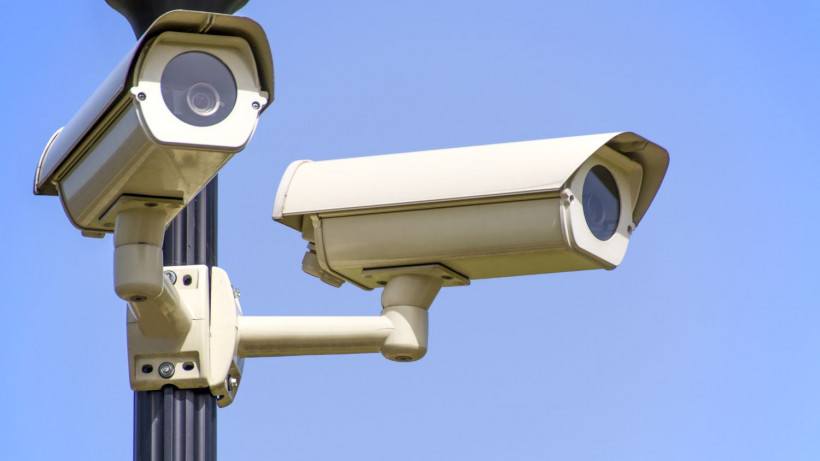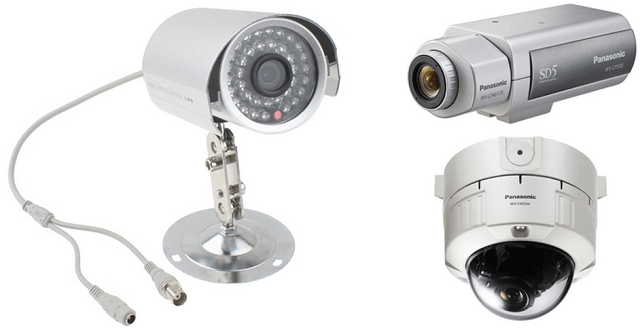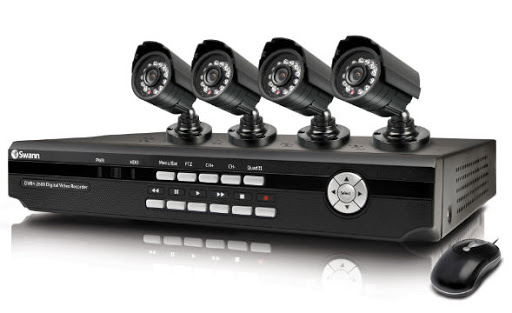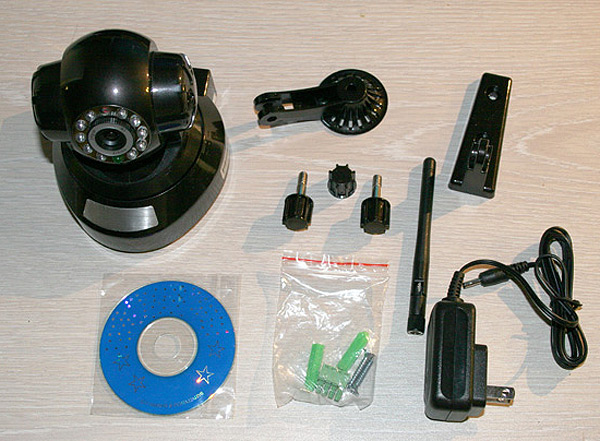To monitor the territory, you need a fixing device and a device capable of forming an image and recording it. A convenient method is to install DVRs. Such a device captures the signal and records it. Correct configuration of the CCTV recorder provides the same performance as a standard surveillance system. At the same time, the installation is much faster.
Features of DVRs
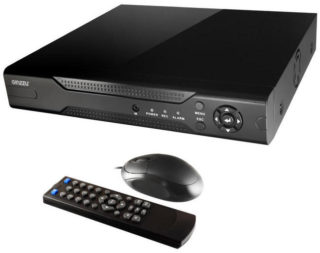
The device is a mini-computer equipped with an input device. It records the signal, compresses it into the required format and writes it to the hard disk. The DVR can work with multiple cameras.
The memory capacity of the device is much higher than that of a camcorder with a memory card.
Video recorders are used when it is important to respond quickly to what is happening on the site and record the observation in order to further study the recordings and analyze.
Hard disk installation procedure in the DVR
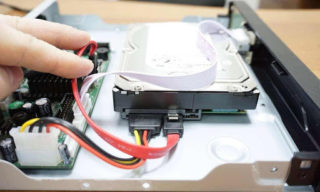
The resulting image is written to the hard disk. Before setting up any CCTV camera, you first need to make sure you have a hard drive or install it if necessary. The algorithm is the same for all models.
- Unscrew the bolts holding the device cover and remove it.
- The hard carrier has mounting holes similar to those in the recorder board. They are aligned and the disc is bolted. The latter are included with the device.
- Find 2 stubs: red for signal transmission and red-yellow for power supply. Connect the ribbon cable to the disk.
- Install the cover and screw it on.
In the DVR, you can install a regular hard drive designed for a PC.
Setup Instructions
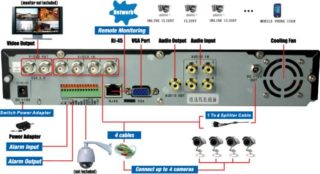
Setting up any video surveillance system is divided into several stages: the physical organization of the system, connecting a video recorder, setting up a video camera.
Connecting the recorder to a computer
The system requires the actual video recorder, cables for connection, a power supply, adapter connectors and a manual that describes how to connect and configure the device and CCTV cameras.
The algorithm is as follows:
- unpack the equipment, find instructions and mounts for the hard drive;
- install and fix the hard drive;
- connect the video recorder to the monitor and its own power supply;
- connect the cameras and the recorder together through patch cords and special connectors;
- plug the device into the network and download.
If everything is done correctly, 4 windows and a registration form will appear on the screen.
Setting up the device

Setting up a video surveillance recorder is a simple procedure, but it requires accuracy and consistency.
- In the registration window, indicate the language and country.
- Select the system standard. For European countries it is PAL, for the USA it is NTSC. Then they read the terms of the agreement and mark the necessary checkbox.
- Determine the time zone and set the system time.
- Enter the password for the account and confirm. The complexity requirements are standard. You can specify the unlock pattern.
- Indicate an additional email address where the password can be reset if the user has forgotten it. You may need to provide secret answers.
- It is recommended to check the checkbox for automatic update check. They are provided by the manufacturer's website.
- The instructions for setting up and connecting the video surveillance recorder describe the next steps: auto-out time, panel shape, date and time format, set the protocol for time synchronization.
- In the network settings, set the MAC address, subnet mask, IP address. You can choose the automatic configuration option, and the devices get their own addresses.
- If you intend to control video surveillance remotely, connect the P2P service.
As a result, a window for adding cameras appears on the monitor. Here you can configure your frame device.
Camera adjustment
Fine-tuning the CCTV camera allows you to adjust the surveillance mode: set filters, set the sector or search object, determine the sensitivity level.
By clicking on "Next step", you get a menu in which the recording mode is set up - constantly, when the movement is fixed, on alarm. The recording schedule is also indicated here. In the desired channel, select the setting of the video surveillance modes by the recorder and indicate how the camera should operate on each day of the week and at different times of the day. This will significantly save money.
The settings are saved. If necessary, connect a smartphone or other gadgets.
Connection options
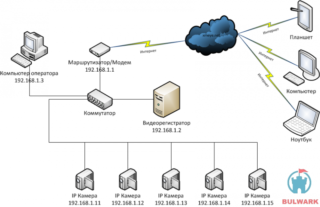
A video surveillance system is more often a local network with Internet access. Direct connection to the Internet is also possible.
Local
There are 2 main options: connecting to a computer that has 2 network cards, or through a network switch. In the first case, they act like this:
- Connect the device to the PC with twisted pair wires.
- Enter the main parameters in the network settings and at the end go to "Local Area Connection".
- Mark the Tcp / IP protocol and move the switch to the "Use the following IP address" position.
- In the interface of the DVR, go to the network settings and indicate the IP address. Its last 2 digits must be different from the IP address of the PC.
The given algorithm is based on the Windows XP OS menus. In other operating systems, the order may be different.
Configuration via a network switch is performed in the same way and differs only in the pinout of the patch cord connector.
Network
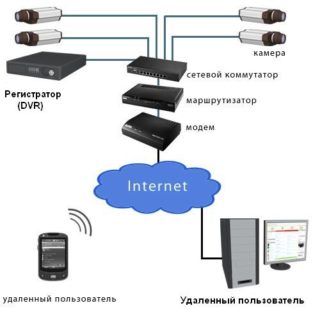
This method involves establishing a connection between the modem and the DVR. The modem is pre-configured: you need to tell the device where to route the connection on the network. If the connection is direct, the settings received from the provider are simply entered into the "Network" menu.
- The connection is made only through Internet Explorer. Through "Internet Options" and "Security" go to "Trusted sites" and add the IP address of the DVR.
- In the address bar of the browser, indicate the static IP address provided by the provider, and press the Enter button. In this case, a window may appear prompting you to install some elements. The user agrees with this and expects their installation.
- Then the browser is restarted, the address of the registrar is entered again. In the window that appears, write the login and password, and then connect to the proposed port.
- When connecting for the first time, the user sees a window with 4 empty squares. To see the image, you need to click on the square and link it to the camera from where the image is received.
How to set up a video camera and a router can be found in the instructions.
Possible malfunctions
Most device breakdowns are associated with settings failures.
- Most often, the user is faced with not saving user settings. Usually the digital part of the device is to blame for this, less often - board defects. In the simplest case, a flashing will be required. If the board is faulty, you need to change the microcircuits.
- Stripes on the screen indicate cable damage, peeling, or oxidation of the contacts.The cables must be replaced, the contacts must be cleaned.
- If the DVR does not turn on due to overheating, you should look at the case. It is necessary to check the integrity of the protective films, covers. The battery may be to blame.
- The recorder does not turn on when the adapter contacts are oxidized or a battery that has become unusable.
A video recorder is one of the ways to organize video surveillance. It allows you to store more recordings than a camcorder with a memory card, and is cheaper than installing IP cameras and renting storage in the cloud. However, the level of security is inferior to the last option: all data is located on a hard disk that can be simply retrieved from the recorder.



